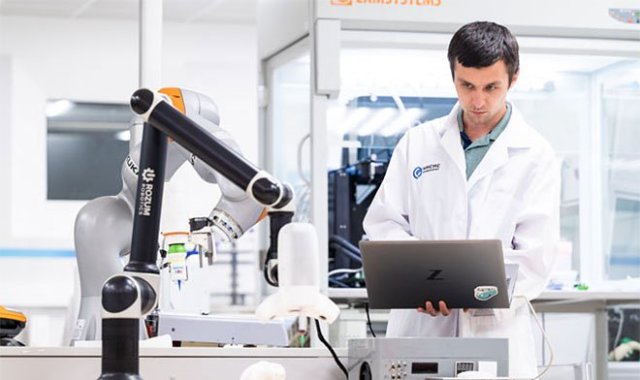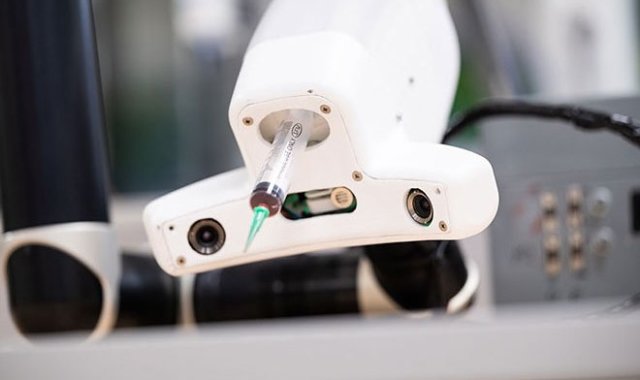
A bioprinter for printing on wounds has been created at MISIS
MISIS announced the creation of a bioprinter that prints soft tissues directly on the wounds of patients, which has already been tested on animals and has proven its high efficiency. There are no world analogues of a bioprinter with such capabilities today.
As a rule, the tissues required for transplantation to seriously damaged areas are created using Petri dishes, but in the future they require adaptation, which requires cumbersome and expensive equipment. MISIS decided to solve this problem by creating this bioprinter. Moreover, a rather original solution was chosen in the form of an ordinary robotic manipulator with a tissue material supply system and several navigation sensors, which were supplemented with specially developed software.

A bioprinter for printing on wounds has been created at MISIS
Such a complex scans the defect and creates a three-dimensional model of it, after which, in a certain order, it fills this area with "ink", which is a hydrogel composition with living cells. At the same time, laser sensors take into account both the wound relief and the change in the patient's position, for example, during inhalation and exhalation, and correct the movements of the print head. The bioprinter from MISIS has already passed a series of tests on laboratory animals, showing excellent results and is ready for further testing. At the same time, the analysis of "pre-printed" wounds on animals over time showed that healing is much faster than with traditional methods of treating such defects.
Max Antonov

